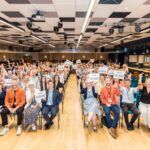Care or support is unsafe when it places the service user at immediate or imminent risk of serious harm through abuse or neglect. Where a person has taken on responsibility for arranging and directing their own care, through a direct payment or self-funding arrangement, they take responsibility for managing risks to their safety.
Improve your practice
Register now for Community Care’s Safeguarding adults at risk conference on 3 July in Birmingham, to improve your adult protection practice.
Under the Mental Capacity Act 2005, people are presumed to have the capacity to make decisions for themselves, and the making of an unwise decision should not be taken as indicating a lack of capacity. However, this does not remove social care professionals’ responsibilities to support the service users to stay safe or to respond to risks to their safety.
Case scenario
The Wonderful Life Care Agency, which is on adult social services’ list of approved providers, has been providing personal care satisfactorily to Dorothy for several months, paid for by her direct payment. Dorothy has mobility difficulties and needs assistance with getting up and bathing, and needs to be lifted using a mechanical hoist. Sarah is newly employed by the agency and is now Dorothy’s main carer. She attends Dorothy’s house on her first week without any introduction and provides services as detailed in the care plan.
Dorothy’s social worker visits on the third day of that week and Dorothy is clearly showing signs of discomfort. The social worker asks Dorothy what is wrong and she shows her some marks on her arms and legs. Dorothy explains that these have been caused by the straps of the hoist when she is being assisted by her carer in the morning and in the evening. Dorothy tells them that her carer is new and doesn’t seem to know what she is doing.
What social worker the should do?
The social worker should consider whether or not this situation meets the local thresholds for raising a safeguarding alert; on the information available it would seem likely that it would. The practitioner should gather relevant information for a strategy meeting or discussion about the agency and the carer’s performance from other service users, the agency itself and social services commissioning staff involved in approving and monitoring the agency.
This may not necessarily result in the implementation of safeguarding procedures; instead it may be that the situation should be most appropriately addressed through the council’s quality assurance procedures for approved providers such as the agency, given its previous record of providing a satisfactory service.
It may however be that, the quality assurance processes identify further causes for concern that would require the safeguarding procedures to be fully implemented.
Tips on managing risks to safety where care is arranged by a service user
Prevention
- Identify potential risks through the support planning process and work with the service user to identify responses to those in the contingency section of the plan.
- Carry out regular reviews, including informal reviews, to identify whether risks have increased or decreased.
- Provide information and advice to ensure the service user and their family know how to contact the professional should risks to safety emerge.
Responding to unsafe care
- Act in accordance with local safeguarding procedures; it is likely that you will need to raise a safeguarding alert.
- Ensure the person is in no immediate danger. In the short-term, you may need to arrange services on behalf of the service user, liaising with the relevant commissioning authority, and with the service user’s consent.
- Ensure your practice is Mental Capacity Act 2005 compliant by supporting the service user to make decisions for themselves.
- If the cause of the unsafe care has implications for other service users, they or relevant commissioners will need to be informed. Use your professional judgement as to when and how to do this.
Guidance on using this briefing
This briefing should be used as a guide only and a trigger for reflection on specific situations; where relevant practitioners should seek advice from their organisation’s safeguarding lead and legal services. It should be read in conjunction with guides on how to respond to cases where care arranged by a service user is poor or breaks down.
Pete Morgan is chair of trustees at the Practitioner Alliance for Safeguarding Adults UK and has produced this guide on its behalf. A qualified social worker since 1980, he is also independent chair of Worcestershire Safeguarding Adults Board though the article is not written in that capacity.



 Bournemouth, Christchurch and Poole
Bournemouth, Christchurch and Poole  Hampshire County Council
Hampshire County Council  Oxfordshire County Council
Oxfordshire County Council  South Gloucestershire Council
South Gloucestershire Council  Wokingham Borough Council
Wokingham Borough Council  Webinar: building a practice framework with the influence of practitioner voice
Webinar: building a practice framework with the influence of practitioner voice  ‘They don’t have to retell their story’: building long-lasting relationships with children and young people
‘They don’t have to retell their story’: building long-lasting relationships with children and young people  Podcast: returning to social work after becoming a first-time parent
Podcast: returning to social work after becoming a first-time parent  How managers are inspiring social workers to progress in their careers
How managers are inspiring social workers to progress in their careers  Workforce Insights – showcasing a selection of the sector’s top recruiters
Workforce Insights – showcasing a selection of the sector’s top recruiters 

 Facebook
Facebook X
X LinkedIn
LinkedIn Instagram
Instagram
Comments are closed.